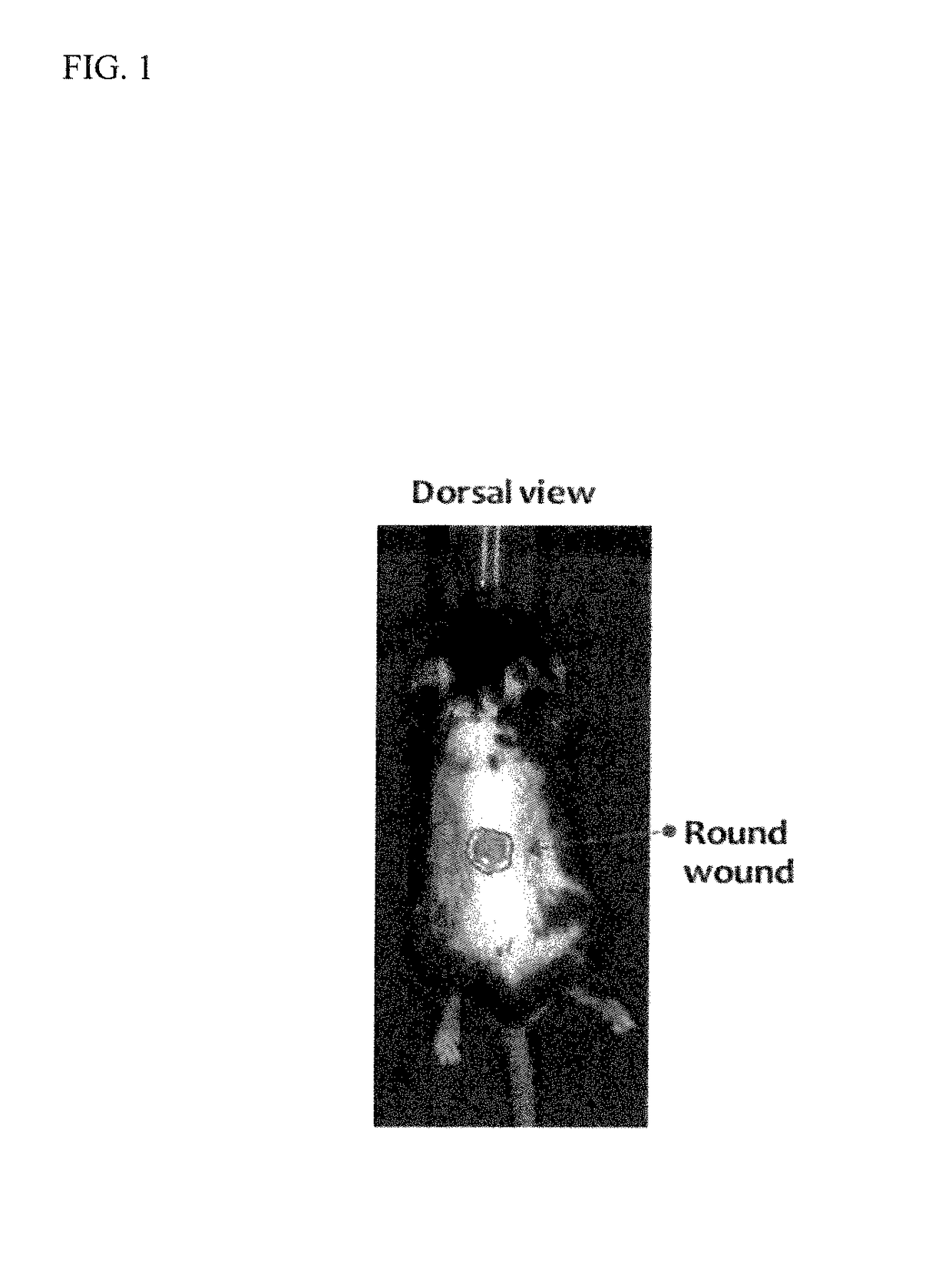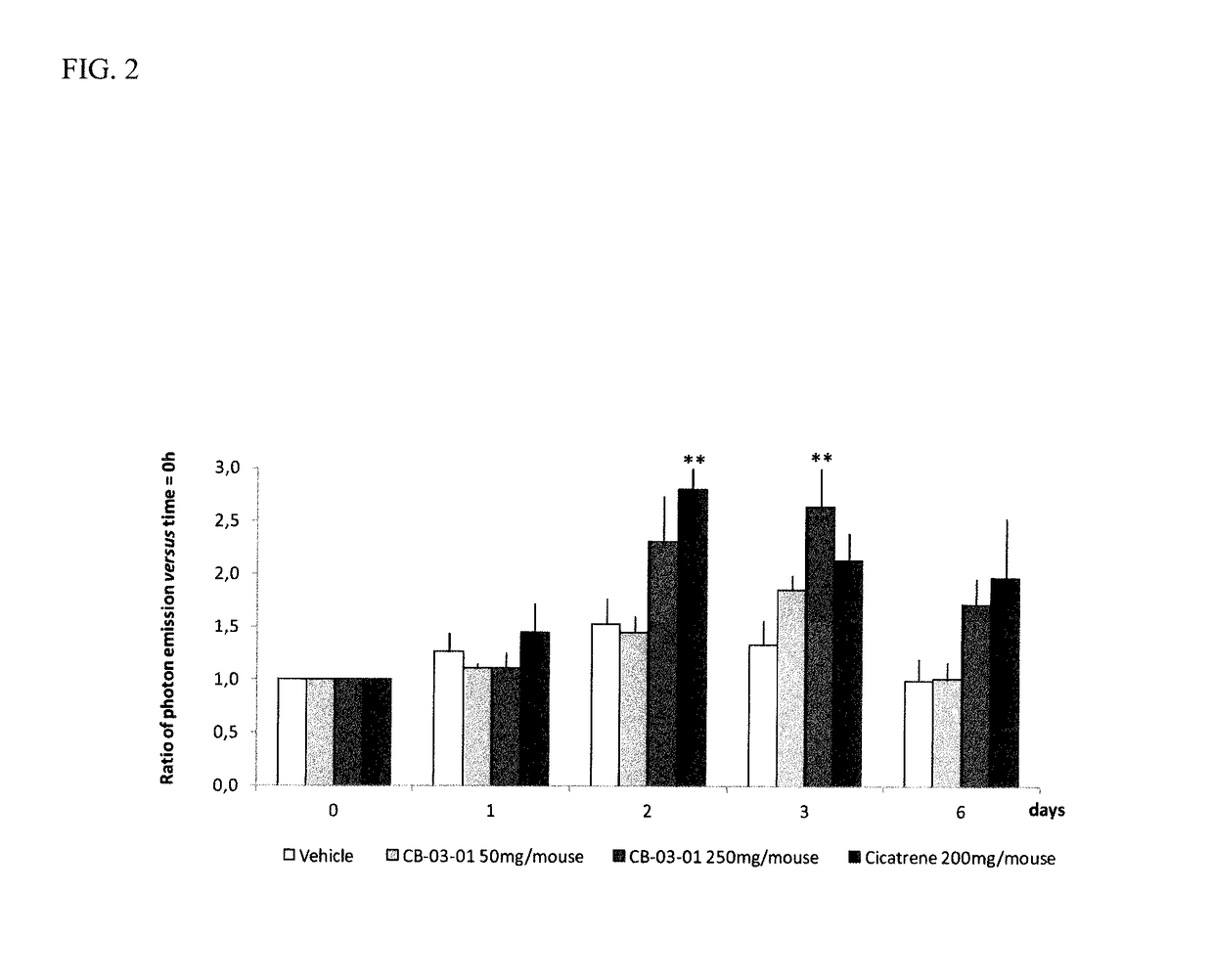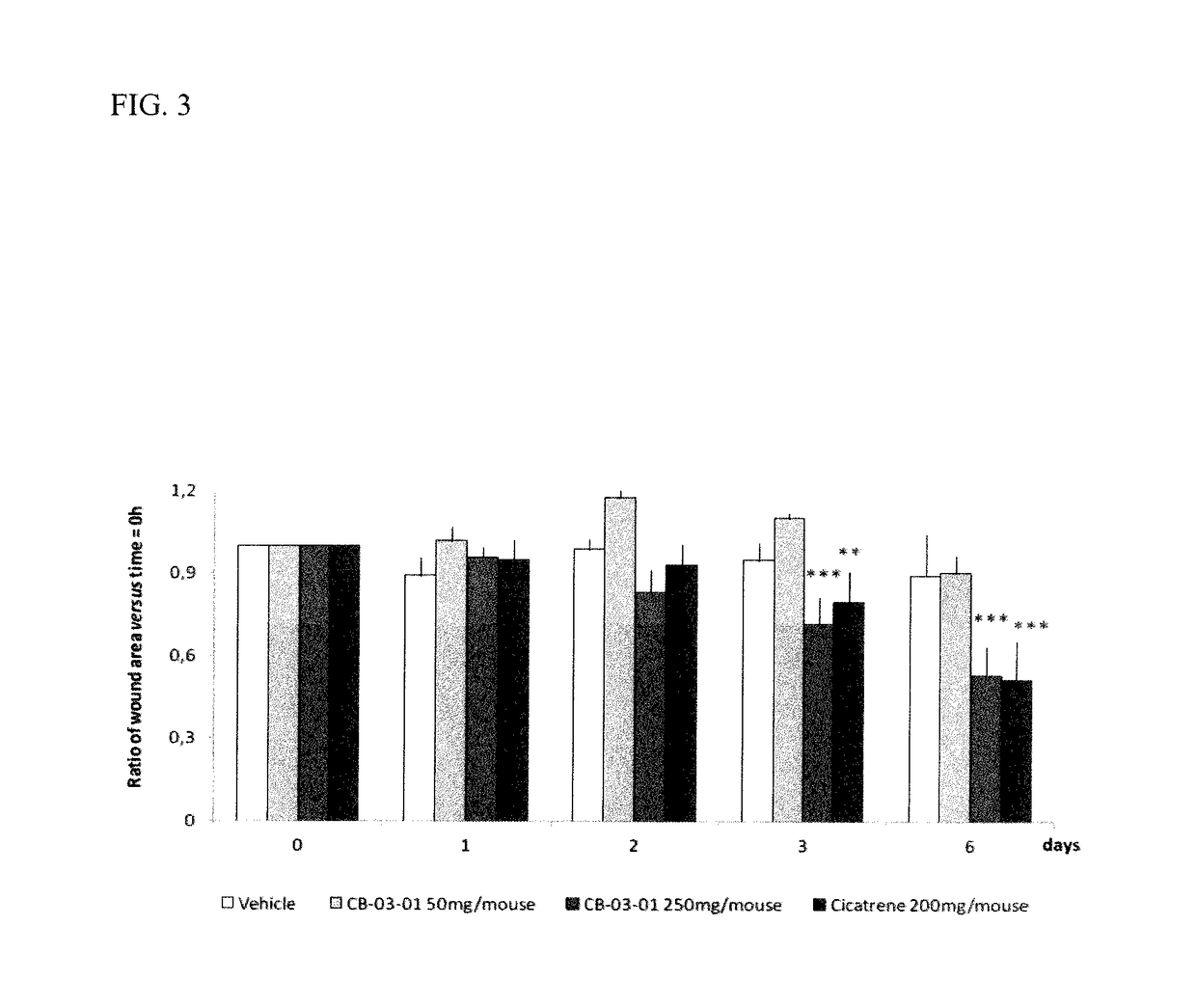CORTEXOLONE 17alpha-PROPIONATE FOR USE IN THE TREATMENT OF SKIN WOUNDS AND/OR ATROPHIC SKIN DISORDERS
a technology of cortexolone and atrophic skin, which is applied in the direction of dermatological disorders, macromolecular non-active ingredients, organic active ingredients, etc., can solve the problems of affecting the viability of derma, dermal sclerosis, necrosis of fibroblasts, etc., to increase actively contributing to skin wound healing and/or atrophic skin healing, and increasing the extracellular protein synthesis
- Summary
- Abstract
- Description
- Claims
- Application Information
AI Technical Summary
Problems solved by technology
Method used
Image
Examples
example 1
Fibroblast Proliferation
[0117]The activity of cortexolone 17α-propionate as wound repairing agent has been proven in an experiment where the drug has been tested in comparison with a known fibroblast proliferation promoter, the recombinant human Epidermal Growth Factor (rhEGF), according to the experimental design here below detailed.
[0118]Fibroblast proliferation: Adult human dermal fibroblasts (HDF) were appropriately grown, and were employed between 2nd and 6th passage. The fibroblasts, plated in a 96-wells plate at density of 5×104 cells / mL, were incubated for 72 hours with recombinant human Epidermal Growth Factor (rhEGF, 100 nM) as positive control, or with cortexolone 17α-propionate at concentration of 1 μM, 5 μM, 25 μM, 50 μM, or with Cortisol 50 μM. Twenty-four hours before end of incubation, the cells were labeled with Bromo deoxyuridine (BrdU, 10 μL / well) and its incorporation into DNA was evaluated measuring the absorbance of the samples in an ELISA reader at 450 nm. The...
example 2
Fibroblast Migration
[0121]The activity of cortexolone 17α-propionate as wound repairing agent has been confirmed in an experiment where the drug has been tested in comparison with a known fibroblast migration promoter, the recombinant human Epidermal Growth Factor (rhEGF), according to the experimental design here below detailed.
[0122]Fibroblast migration: Adult human dermal fibroblasts (HDF) were appropriately grown, and were employed between 2nd and 6th passage. The cells were plated in suitable Culture-insert μ-Dish 35 mm, and were incubated for 24 h with vehicle alone, or with rhEGF 100 nM, or with cortexolone 17α-propionate 10 μM and 50 μM, or with Cortisol 50 μM. After incubation the culture-insert was removed and the cells were maintained in culture for further 24 hours. Immediately after insert removal, and at interval of 6 and 24 h, the plates were photographed by Digital Microscope Eyepiece. The entity of cell migration was measured using image analyzing software Image J, ...
example 3
Effect on Extra-Cellular Protein Synthesis
[0125]The activity of cortexolone 17α-propionate as wound repairing agent has been confirmed in an experiment where the drug has been tested in comparison with a known extra-cellular protein synthesis promoter, the recombinant human Epidermal Growth Factor (rhEGF), according to the experimental design here below detailed
[0126]Adult human dermal fibroblasts (HDF) were appropriately grown, and were employed between 2nd and 6th passage. The fibroblasts, plated in a 24-wells plate at the density of 12×104 cells / mL (1 mL / well), were incubated for 72 hours with rhEGF (100 nM) as positive control, or with cortexolone 17α-propionate at concentration of 5 μM, 25 μM, 50 μM. After 72h of incubation the supernatant were mixed with 1 mL of Bradford reagent and incubated for 45 minutes at room temperature. Each sample was then read in a spectrophotometer at 595 nm. The results of protein concentration are reported in the Table 5 below:
TABLE 5Effect on ext...
PUM
| Property | Measurement | Unit |
|---|---|---|
| area | aaaaa | aaaaa |
| temperature | aaaaa | aaaaa |
| temperature | aaaaa | aaaaa |
Abstract
Description
Claims
Application Information
 Login to View More
Login to View More - R&D
- Intellectual Property
- Life Sciences
- Materials
- Tech Scout
- Unparalleled Data Quality
- Higher Quality Content
- 60% Fewer Hallucinations
Browse by: Latest US Patents, China's latest patents, Technical Efficacy Thesaurus, Application Domain, Technology Topic, Popular Technical Reports.
© 2025 PatSnap. All rights reserved.Legal|Privacy policy|Modern Slavery Act Transparency Statement|Sitemap|About US| Contact US: help@patsnap.com



